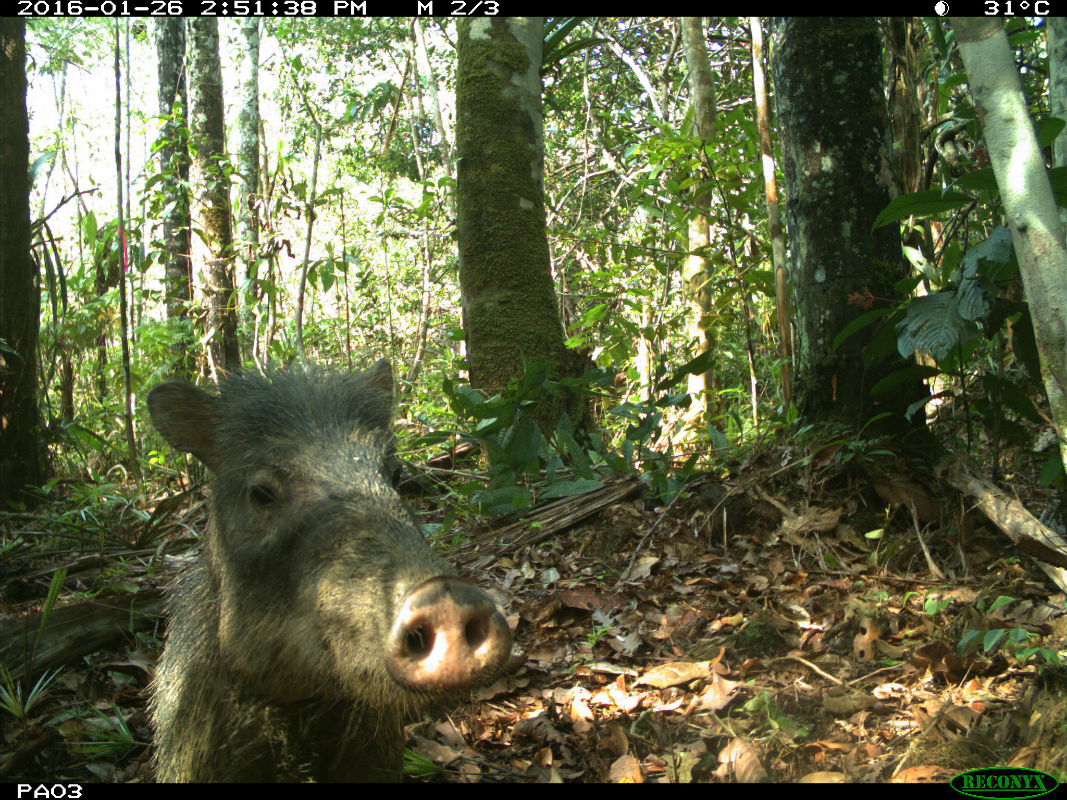Camera Hogs: Wild Pigs and Other Amazonian Wildlife Pose for 'Selfies'

In the Peruvian Amazon, the rainforests of Medio Putumayo-Algodón are teeming with biodiversity, much of which is rarely glimpsed by people.
But now, thanks to a network of motion-activated cameras and drone video, these little-seen animals and the rainforest they call home are taking a turn in the limelight.
A team of 25 scientists from Chicago's Field Museum recently visited the area, accessible only by helicopter, to document unexplored forest regions. They captured individual portraits of charismatic creatures, via the camera traps, and overhead views of the forest. This was the first time that scenes of life in this remote corner of the Amazon were ever recorded by scientists. [Photos: Check out the selfies of animals from the Amazon]
The photos show an astonishing array of birds and mammals active during the day and at night, including a sleek ocelot, a burly giant armadillo and a tubby tapir.
Researchers deployed 14 cameras, and over 17 days, they conducted rapid inventories — described on The Field Museum's website as swift investigations intended to quickly take stock of the local flora and fauna — collecting recorded images, drone videos and firsthand observations in a previously unexplored environment.
The Amazon Rainforest: A Drone’s Eye View from The Field Museum on Vimeo.
The scientists reported 1,820 plant and animal species — mammals, birds, reptiles, amphibians and fish — of which 19 were suspected to be new species to science.
Sign up for the Live Science daily newsletter now
Get the world’s most fascinating discoveries delivered straight to your inbox.
Biologists focused on assessing the wildlife populations, while a team of sociologists approached the nine indigenous groups that had been living in the area for hundreds of years, to discover how they were interacting with their surroundings and to assess impending threats from logging and mining.
The Field Museum has completed 28 rapid inventories in unexplored — and often previously inaccessible — regions of the Amazon, Cuba and China since 1999. The scientists have discovered more than 150 new species, collaborated with government officials to create and expand protected areas, and worked with local communities to determine conservation plans.
If Amazon wildlife — the species known to science and those yet to be discovered — are to continue to survive and thrive, their habitats will need to be monitored and conserved long after the cameras are gone, the researchers said.
The Field Museum published the photos online April 22 on Facebook.
Follow Mindy Weisberger on Twitter and Google+. Follow us @livescience, Facebook & Google+. Original article on Live Science

Mindy Weisberger is an editor at Scholastic and a former Live Science channel editor and senior writer. She has reported on general science, covering climate change, paleontology, biology and space. Mindy studied film at Columbia University; prior to Live Science she produced, wrote and directed media for the American Museum of Natural History in New York City. Her videos about dinosaurs, astrophysics, biodiversity and evolution appear in museums and science centers worldwide, earning awards such as the CINE Golden Eagle and the Communicator Award of Excellence. Her writing has also appeared in Scientific American, The Washington Post and How It Works Magazine. Her book "Rise of the Zombie Bugs: The Surprising Science of Parasitic Mind Control" will be published in spring 2025 by Johns Hopkins University Press.










